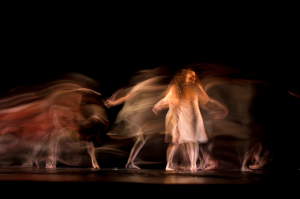An Introduction To Performing Arts & It’s Range of Disciplines
It’s practiced around the world but not everyone understands what is performing arts and what disciplines fall under it. The performing arts is an umbrella term which covers many disciplines including music, dance and drama, all performed to an audience. It’s in contrast to visual arts which involves the use of paint or other materials to create some sort of physical art. It is often performed to a live audience, though can be pre-recorded and performed professionally. A performance involves 4 elements: time, space, the performer’s body or presence in a medium and the relationship between the performer and audience.
Here we will outline the main disciplines which fall under performing arts and what they involve.
Dance
Dance is a popular performance art. It involves moving the body in a rhythmic or purposeful way to music within space, in order to express an idea, emotion or just for the enjoyment of movement. Skilful performers can channel their emotions into a performance that is expressive and delights and moves the audience. It can be a skilfully choreographed performance. It can be elegant and classical, or it can be contemporary. It can be highly aesthetic. It can be graceful, harmonious or very spontaneous. It can be described as a physical expression of an inner emotion. In many performances it conveys a story and/or emotion. It can be moving, entertaining or both. Dance movements can be organised into spatial or rhythmic patterns, conforming to a pattern of regular accents or stresses. The audience is drawn into these patterns created by the dancer’s movements and shares in the emotions being expressed.
Music
Perhaps the most universal of all performing arts is music as it is found in every society. It’s found in many contexts, classical or popular, sacred or profane. Common elements of music include rhythm, pitch, dynamics, timbre and texture. Music can range from organised composition up to improvisational music. Opera comes under this category of music as a performing art, but can also involve theatre and dance. It is usually performed in an opera house. This category can include many types of music performed by an instrument, which includes the voice as well as many orchestral and other instruments. Its types are varied and include contemporary, jazz and classical.
Theatre
Theatre is a branch which is concerned with acting out stories in front of an audience. The performer can use speech, gestures, music, dance or sound to achieve this. It’s a collaborative art form which combines the elements listed above to express meaning. Theatre can be live improvisation or highly scripted. It also includes dramatic forms such as film, TV and electronic media. Theatre involves more than just an actor or actress but a whole team is involved who manage elements such as painted scenery, stagecraft, lighting, sound and make up. There are different types of theatre including drama, which is fiction represented in a performance or poetry, musical theatre combining music and spoken dialogue and dance. Comedy, which uses humour to tell a story, is another type of theatre. Tragedy is another, which refers to a specific tradition of drama and includes works of Shakespeare for example and finally improvisation, which is an alternative to a scripted performance and is a form of situational comedy.
We have outlined what is performing arts and examples of the types of genres. These forms of performance art, though diverse, have much in common and are enjoyed and welcomed by audiences around the world. The performers and those involved are highly skilled. To be a performer is very much a passion for most and a lot of time and effort is taken to hone their craft.
Image:
Odeh, A. (2021). Woman in White Dress [photograph]. Unsplash.com. woman in white dress dancing on stage photo – Free Image on Unsplash



